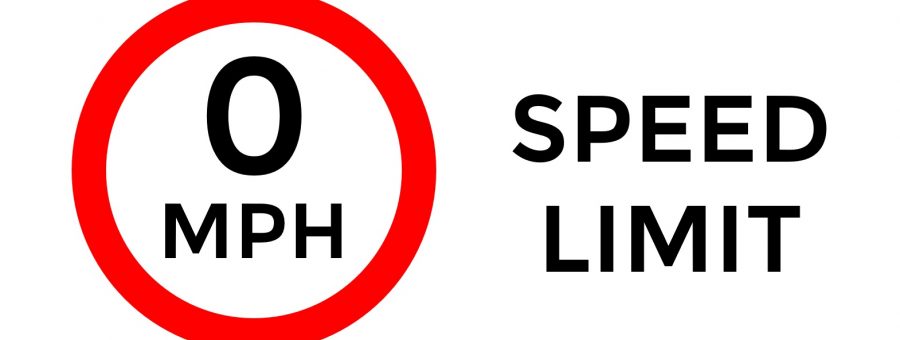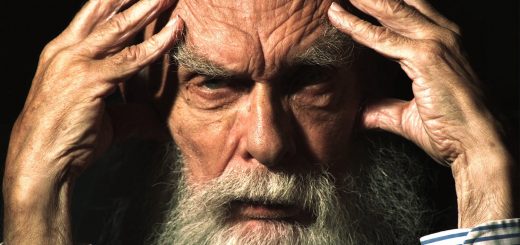Unsafe at Zero Speed

Shôn Ellerton, April 1, 2019
A fun article on how driving at zero speed is unsafe!
It had to happen. In response to a suit brought by an irate motorist caught in a radar trap, the court ruled that the president did not have the authority to restrict the highways speed to 55 mph. The president then asked Congress to set such a limit. Congress, as is its want, decided to hold hearings before acting. The response from interested parties was large.
Testimony indicated that reduction of the speed limit to 55 mph had indeed saved lives and gasoline, and should be re-imposed by Congress.
This was immediately challenged by I.Q. Nadir, speaking on behalf of 225 million Americans, who pointed out that the loss of lives from highway accidents at 55 mph was enormous, morally wrong, and unacceptable to him. To make his point, he showed gory movies of head-on collisions at 55, 45, 35, and 25 mph. “Twenty-five mph.” he said, “while not perfect, would be an acceptable and reasonable compromise, since deaths would be minimised and battery-driven cars would be able to compete with gasoline cars. The 55-mph limit traded human lives for earnings for the big business interests within the automobile industry, with their substantial investment in high-speed gasoline engines. They were using this subsidy, given to them by the 55-mph speed limit, to freeze out competition from battery-driven cars, which performed best up to 25 mph.”
A spokesman for the American Bicycle Association felt the occasion called for a drastic rethinking of our way of life. Reducing the highway speed from 55 mph to 25 mph was at best a halfway measure—one of degree, not substance. The speed limit should be reduced to 15 mph. While this appeared to be only more of the same, it was not. Most persons killed while riding bicycles were in urban areas with 25 mph speed limits, so the proposed reduction to 25 mph did absolutely nothing for the growing millions of bicyclists— really, it was only a cruel hoax! But at 15 mph, no one would be passing anyone. This major cause of accidents would be eliminated and the death rate would drop sharply—far out of proportion to the small reduction in speed. After all, if we’re really serious about the sanctity of human life, we should strive for a zero-death rate on the highways.
To which Prof. Thirkrey of Concordia Centre of Sciences, stated that to reach zero death rate on the highways, which was certainly a legitimate goal, we need only set a speed limit of zero mph. His data showed that death rates increased linearly with highway speed limits, and the line passing through the data points, if extended backwards, passed through zero at zero mph. In fact, if he extrapolated even further to negative auto speeds, he got negative auto deaths, and could only conclude, from his data, that if automobiles went backwards rather than forwards, lives would be created, not lost.
At this, a representative of the Malthusian Society protested about Prof. Thirkrey’s alarming data. Apparently, cars backing up on the highways could lead to a ‘wanton creation of life,’ something the overcrowded Earth could best do without. His society preferred a 100-mph minimum forward limit, which, his calculations showed, would cause the auto death rate to equal the birth rate, leading to a natural balance which, everyone knew, was preferred by Mother Nature. He admitted that there would be a temporary increase in gasoline consumption, but, in the long run, this limit would actually save gas as drivers were eliminated by attrition. Besides, if Congress gave them the mandate, the automobile industry could build cars that would give as good mileage at 100 mph as at 55, or even 15.
Dr. Hoffman, of the Union of Affiliated Scientists, felt that Prof. Thirkrey, whose work he normally admired, had in this case erred in stating that auto deaths would drop to zero if auto speeds were reduced to zero. Certainly this was an understandable mistake. There just weren’t good data on auto deaths at 2 or 3 or even 5 mph, so the “tail of the curve” was subject to errors. But intuitively he felt that, while autos traveling at 55 mph might be randomly distributed throughout the nation’s highways, at zero mph they would be closely clustered together in parking lots, with a much greater probability of interaction. His calculations showed that the relationship was not a straight line, as Prof. Thirkrey had mistakenly assumed, but rather, because of the “cluster effect” there was a sharp secondary increase in deaths at speeds approaching zero mph. Probably a lazy J-shaped curve would describe it best, with the low point— the nadir, to make a small joke—at about 4 to 6 mph. Unfortunately, he concluded, automobiles were unsafe at any speed and should be banned.
Dr. Hoffman then went on to publicly apologize for his early role in the development of the automobile, which he said was, pound for pound, the most deadly machine in the world. (Readers may not be aware that Dr. Hoffman is father of the seatbelt-ignition interlock system, hailed in the 70’s as the foremost safety development of the 20th century, until it was banned by pressure from the anti-safety lobby in Congress. In its brief existence, the interlock is credited with saving millions of gallons of gasoline and hundreds of lives, as thousands of cars sat idle in driveways because puzzled drivers couldn’t figure out how to start them.)
Dr. Bernie Constance of Lincoln University said he was delighted with the previous testimony because it was certainly within our capabilities to build a solar car that could approach and perhaps achieve 6 mph on a sunny day in Arizona. these could be assembled from kits in the backyard by the average handyman thus eliminating the automobile industry. While the solar collectors needed were too large to allow two cars to pass, or to fit under an underpass, these problems were considered minor as the technology was developing rapidly. All that was really needed was a subsidy from the government and the 6-mph speed limit to make solar autos a viable option. Trees along the highway that shaded the sun would have to be cut down, he admitted, but, as he pointed out, there is no free lunch. At any rate, Dr. Hoffman’s data showing minimum deaths at 4 to 6 mph was welcome news because, with a bit of development and government support, the solar industry could achieve that goal, which was a reasonable one.
Congress acted decisively, calling for a 5-year moratorium. It was thus left to the Supreme Court to decide whether the speed limit stayed at 55, dropped to 25, or zero, or infinity.
~
Hope you enjoyed this fun and fictional article. I did not write the article so can’t claim credit for it. It was originally published many years ago by the Journal of Irreprodicible Results, a compendium of pseudo-scientific-based papers of which I found a dusty copy of one idling on my bookshelf. I could not find this fantastic (true to the word) story on the Internet, so I took the liberty to reproduce it here along with a couple of changes to suit the times. However, there is a serious side to this. Many papers which claim to be objective and research-based may not tell the complete story and/or use statistics to create a bias to the overall result. It is a lesson well-learnt to read from a variety of sources to form a more objective conclusion.


